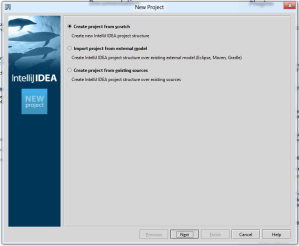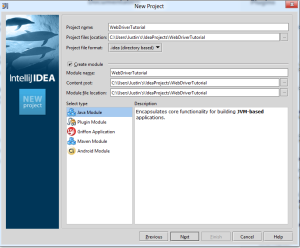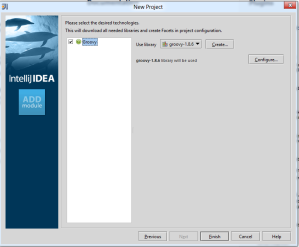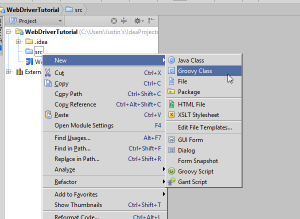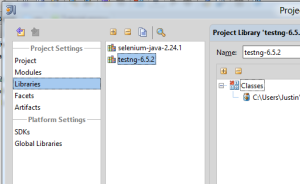Recently I needed to setup my Spring-Boot app to manage 2 instances of the Mongo driver. This allowed me to configure each one with database specific settings like the ReadPreference example below.
My requirements:
- I wanted all Spring configuration in Java code/annotations. (I hate XML!)
- I wanted Spring to manage both the Mongo and MongoTemplate objects.
- I wanted to use MongoRepository Interface beans and have the correct MongoTemplate back it.
The first thing we need to do is create a base configuration that will contain the generic beans shared between our two databases.
MongoConfiguration.java
@Configuration
public class MongoConfiguration {
/**
* For a clustered Mongo environment we would want to load multiple
* hosts. This will work if we use a single host or clustered.
*
* If the mongo.hosts key could not be found defaults to localhost
*
* One of the following would exist in our Spring properties file
* 1) mongo.hosts = localhost
* 2) mongo.hosts = 10.1.1.1,10.1.1.2,10.1.1.3
*/
@Value("#{'${mongo.hosts:localhost}'.split(',')}")
private List<String> hosts;
/**
* The port our Mongo hosts are running on.
* Defaults to 27017
*/
@Value("${mongo.port:27017}")
private int port;
/**
* Creates a base Mongo instance that can be configured for each
* implementation.
*
* NOTE: If you are trying to connect to multiple MongoDB's then
* you would want to create 2 instances of this method as beans
* loading the correct mongo hosts. For my implementation I just
* wanted different global configurations pointed at the same
* database.
*
* @return A generic Mongo instance pointed at the hosts.
* @throws Exception
*/
private Mongo createMongo() throws Exception {
final List<ServerAddress> serverList = new ArrayList<>();
for (final String host : hosts) {
serverList.add(new ServerAddress(host, port));
}
// MongoClientOptions would be created here and passed into
// the MongoClient as it's second param.
return new MongoClient(serverList);
}
@Primary
@Bean
public Mongo readFromSecondaryNodeMongo() {
final Mongo mongo = createMongo();
// Do custom global configuration
mongo.setReadPreference(ReadPreference.secondaryPreferred());
return mongo;
}
@Bean
public Mongo readFromPrimaryNodeMongo() {
final Mongo mongo = createMongo();
mongo.setReadPreference(ReadPreference.primaryPreferred());
return mongo;
}
/**
* This is the default DB Factory and will have the
* readFromSecondaryNodeMongo() bean injected due to the @Primary
* annotation
*
* @param mongo auto injected using the @Primary bean
* @return a new MongoDbFactory
*/
@Bean
public MongoDbFactory mongoDbFactory(Mongo mongo) {
return new SimpleMongoDbFactory(mongo, "DatabaseName");
}
}
Now that we have beans defined we need to create the configurations that will define and load the MongoTemplates into the correct repository interfaces.
ReadPrimaryNodeConfiguration.java
/**
* The basePackages needs to point to the Interfaces
* this configuration is going to back.
*/
@Configuration
@EnableMongoRepositories(
basePackages = "com.example.primary",
mongoTemplateRef = "readPrimaryNodeTemplate"
)
@Import(MongoConfiguration.class)
public class ReadPrimaryNodeConfiguration {
/**
* The @Qualifier here so we can load the non-default
* Mongo bean.
*
* @param mongo the non-default Mongo instance
* @return a new MongoTemplate
* @throws Exception thrown from MongoTemplate
*/
@Bean
public MongoTemplate readPrimaryNodeTemplate(
@Qualifier("readFromPrimaryNodeMongo") Mongo mongo
) throws Exception {
final MongoDbFactory factory =
new SimpleMongoDbFactory(mongo, "DatabaseName");
return new MongoTemplate(factory);
}
}
ReadSecondaryNodeConfiguration.java
/**
* The basePackages needs to point to the Interfaces
* this configuration is going to back.
*/
@Configuration
@EnableMongoRepositories(
basePackages = "com.example.secondary",
mongoTemplateRef = "readSecondaryNodeTemplate"
)
@Import(MongoConfiguration.class)
public class ReadSecondaryNodeConfiguration {
/**
* We don't use an @Qualifier here so the default
* MongoDbFactory in MongoConfiguration will be injected
*
* @param factory the default factory
* @return a new MongoTemplate
* @throws Exception thrown from MongoTemplate
*/
@Primary
@Bean
public MongoTemplate readSecondaryNodeTemplate(
MongoDbFactory factory) throws Exception {
return new MongoTemplate(factory);
}
}
With that all we need to do is create the repository interface beans in the correct base package.
This will be backed by the MongoTemplate created in the ReadPrimaryNodeConfiguration.java
com.example.primary.ReadPrimaryNodeRepository.java
@Repository
public interface ReadPrimaryNodeRepository
extends MongoRepository<MyDocument, String> {
// Method to look up a document by its ID
MyDocument findById(String id);
}
And this one will be backed by the MongoTemplate created in ReadSecondaryNodeConfiguration.java
com.example.secondary.ReadSecondaryNodeRepository.java
@Repository
public interface ReadSecondaryNodeRepository
extends MongoRepository<MyDocument, String> {
// Method to look up a document by its ID
MyDocument findById(String id);
}

